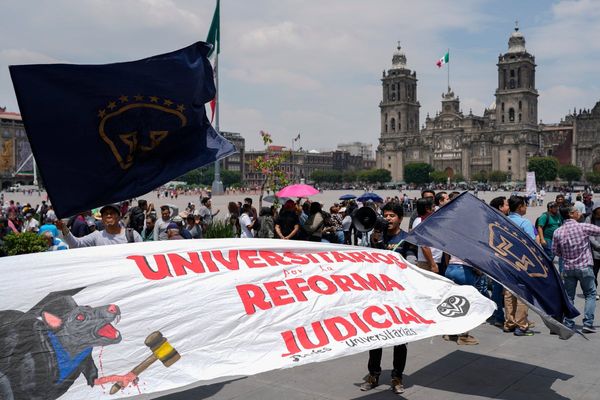
More than a dozen of Australia’s coral islands that help to extend the country’s maritime jurisdiction are at high risk of disappearing because of climate change, according to a study.
The fate of the low-lying islands now “hangs in the balance”, said the scientist who led the study, with rising sea levels, marine heatwaves, intensifying weather systems and ocean acidification compounding the risk.
How international law will deal with islands that currently extend the jurisdiction of countries, but could soon disappear, is a vexed issue, one expert said.
Dr Tommy Fellowes, of the University of Sydney, led the study of 56 low-lying Australian coral islands and produced a method to assess the level of risk they faced.
The islands were assessed based on factors such as how susceptible they already are to inundation, storms, sea level rise and marine heatwaves that can kill coral reefs that supply sediment to keep the islands stable.
There are hundreds of coral islands, but the 56 were chosen both for their strategic importance and also because enough data was available to make assessments. Islands were put into five categories from low risk to very high risk.
Three islands on Western Australia’s North West Shelf – Scott, Clerke and Imperieuse reefs – were considered “very high risk” and the most vulnerable.
A further 11 islands, all in the Coral Sea off the Queensland coast, were considered to be facing a high risk, the study said.
“These islands come in a range of shapes and styles and they are all exposed to a range of environmental pressures like storms, sea level rise and heat stress,” Fellowes said.
The world’s oceans are rising as ice melts and flows into the ocean from glaciers and ice sheets attached to land, as well as because of thermal expansion as the ocean gains heat.
Fellowes said sea level rise was “probably the most notable threat” facing many of the islands, which are in places where sea levels are rising faster than the global average.
The risk assessments were based on current conditions, but Fellowes said it was clear that factors such as marine heatwaves, rising oceans and storms were likely to worsen due to climate change.
No time frames were put on when areas could disappear, but this is a focus of future work.

Island territories grant rights to the countries that own them, including fisheries and resources exploration, and Fellowes said the resilience of these coral islands was “a matter of strategic importance for Australia’s and the region’s coastal management”.
Within a maritime zone, Australia applies its own laws and regulations about rights to explore for resources such as oil and gas, or to apply environmental protections such as creating marine parks.
Dr Frances Anggadi of the University of Wollongong’s Australian National Centre for Ocean Resources and Security is an expert on how rising sea levels could affect the maritime zones of countries around the world.
Australia’s maritime zones are decided by two methods. One way is to extend the zone 200 nautical miles from the low tide mark, beyond which is considered international waters.
Alternatively, if that zone would extend into another country’s waters, as it does in parts of the Torres Strait, North West Shelf and Coral Sea, an agreement is reached which Anggadi says usually “splits the difference”.
For Australia, loss of islands could mean a revision to the country’s law that would use a fixed coordinate to determine the maritime zone, instead of a measure from a low-tide mark.
Internationally, she said about 50 countries were supporting a change under UN processes that has traditionally designated exclusive economic zones based on the position of the land.
Under that change, she said countries – including Australia – were supporting a move to designate zones based on coordinates so that economic rights would remain even if the land had disappeared beneath the water.
“But there’s no way to guarantee a course of action that would be free from disputes,” she said.
“Border disputes are tied to sovereign interests and there are still political interests and sensitivities so you have to expect there are going to be differences of opinion.”
The study appeared in the journal Science of the Total Environment.







